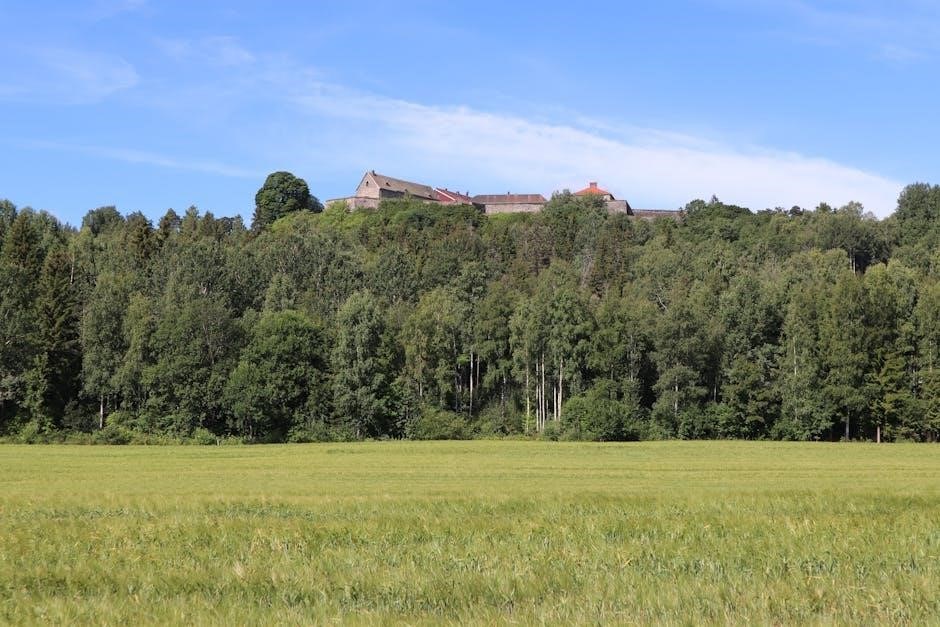The Indus Valley Civilization, also known as the Harappan Civilization, flourished in the Bronze Age (3300-1300 BCE). It was one of the earliest urban societies, spanning across modern-day Pakistan and northwest India.
Overview and Significance
The Indus Valley Civilization (IVC), or Harappan civilization, stands as a pivotal ancient culture, flourishing during the Bronze Age (3300-1300 BCE) in the Indus River valley. Its significance lies in its advanced urban planning, sophisticated water management systems, and extensive trade networks, distinguishing it from contemporary civilizations. The IVC encompassed a vast geographical area, larger than Mesopotamia or Egypt. Its unique script, though undeciphered, suggests a complex administrative and social structure. The civilization’s legacy includes contributions to urban design, sanitation, and possibly early forms of democratic governance. The study of the IVC provides invaluable insights into the development of early urban societies and their interactions with the environment.
Geographical Extent: Afghanistan to Northwest India
The Indus Valley Civilization (IVC) occupied a vast geographical expanse stretching from northeast Afghanistan to present-day Pakistan and northwest India. This extensive area encompassed diverse ecological zones, including fertile river plains, arid deserts, and coastal regions. Key settlements like Harappa and Mohenjo-daro flourished along the Indus River and its tributaries. The civilization’s reach extended to sites such as Shortugai in Afghanistan, demonstrating trade and cultural exchange with Central Asia. The geographical diversity influenced agricultural practices, resource management, and trade routes. The Indus River served as a crucial artery for transportation and communication, connecting distant settlements and facilitating the exchange of goods and ideas across the region. This wide distribution highlights the IVC’s remarkable adaptability.
The Indus Valley Civilization’s existence was revealed in the 19th century. British explorers and archaeologists noted ancient mounds and ruins, hinting at a forgotten civilization in the Indus Valley region.
Early Evidence and Initial Findings
Initial evidence of the Indus Valley Civilization emerged in the late 1850s, largely through the observations of British officials and engineers during railway construction. These individuals encountered ancient bricks and artifacts at sites like Harappa, initially dismissing them as remnants of more recent settlements. However, the sheer quantity and unusual nature of the finds gradually piqued interest. Systematic research, however, was lacking, and the significance of these discoveries remained largely unappreciated for several decades. It was only later, with the establishment of dedicated archaeological efforts, that the true extent and importance of the Indus Valley Civilization began to be revealed, marking a pivotal moment in understanding South Asia’s ancient past.
Key Excavation Sites: Mohenjo-Daro and Harappa
Mohenjo-Daro, located on the banks of the Indus River, and Harappa, situated near the Ravi River, stand as the two most prominent and extensively excavated sites of the Indus Valley Civilization. These sites provided crucial insights into the urban planning, architecture, and societal organization of the Harappan people. Excavations at Mohenjo-Daro revealed a meticulously planned city with advanced drainage systems and the Great Bath, a large public bathing complex. Harappa, similarly, showcased sophisticated urban layouts and provided evidence of craft specialization and trade. The discoveries at these sites revolutionized our understanding of early urbanism in South Asia, demonstrating a high level of technological and cultural advancement.
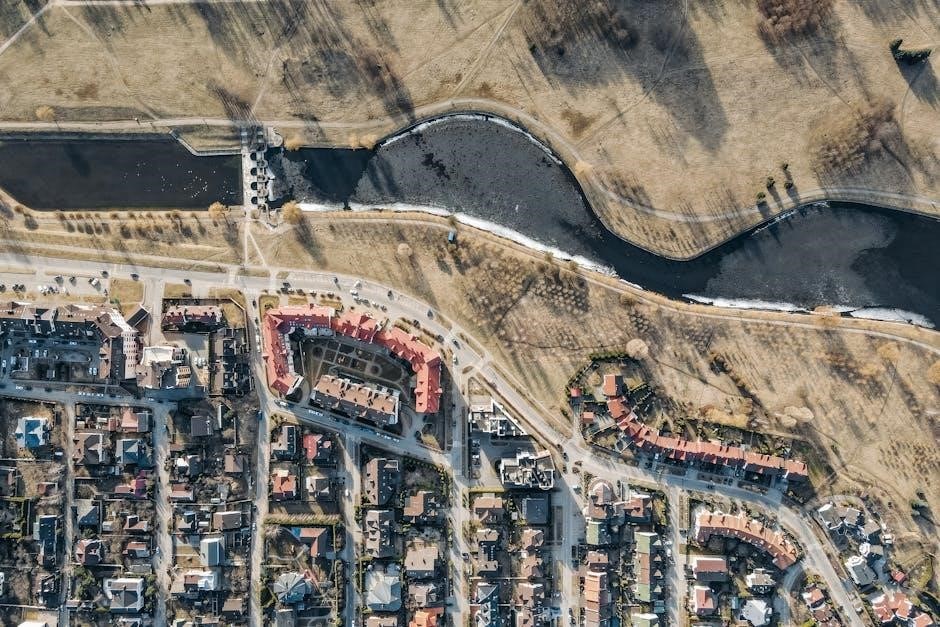
Discovery and Excavation
Role of the Archaeological Department of India
The Archaeological Department of India played a pivotal role in the discovery and excavation of the Indus Valley Civilization. In the early 20th century, under the leadership of archaeologists like Sir John Marshall, the department initiated systematic excavations at key sites such as Mohenjo-Daro and Harappa. These excavations brought to light the existence of a sophisticated urban civilization that predated previously known historical periods in the Indian subcontinent. The Archaeological Department of India meticulously documented and analyzed the findings, contributing significantly to our understanding of the Harappan culture’s urban planning, trade networks, and technological advancements. Their work established the Indus Valley Civilization as a major civilization of the ancient world, comparable to Mesopotamia and Egypt.
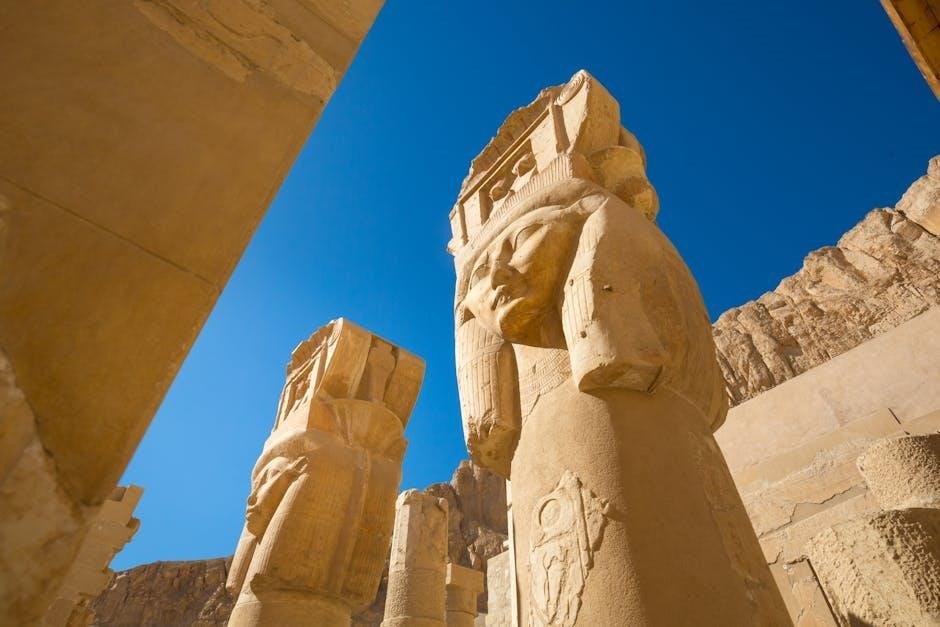
Chronology and Periodization
Bronze Age Context (3300-1300 BCE)
The Indus Valley Civilization existed during the Bronze Age, specifically from 3300-1300 BCE. This period is crucial for understanding its technological advancements and interactions with other contemporary cultures.
Bronze Age Context (3300-1300 BCE)
The Indus Valley Civilization (IVC) thrived during the Bronze Age, specifically between 3300 and 1300 BCE. This era marks a significant period in South Asia’s history, characterized by the emergence of urban centers and sophisticated technologies. The IVC existed alongside other prominent Bronze Age civilizations, such as those in Mesopotamia and Egypt, showcasing parallel developments in urban planning, agriculture, and trade. The civilization’s mastery of bronze metallurgy played a crucial role in the production of tools, weapons, and other artifacts, contributing to its economic and social advancements. Archaeological evidence indicates a complex society with well-organized systems of governance and resource management. The IVC’s Bronze Age context provides valuable insights into the interconnectedness of early civilizations and the exchange of ideas and technologies across different regions. This period laid the foundation for subsequent historical developments in the Indian subcontinent.
Mature Harappan Phase (2600-1600 BCE)
The Mature Harappan Phase, spanning from 2600 to 1600 BCE, represents the peak of the Indus Valley Civilization’s urban development and cultural achievements. During this period, major cities like Mohenjo-Daro and Harappa flourished, showcasing advanced urban planning, standardized weights and measures, and intricate drainage systems. Trade networks expanded, connecting the Indus Valley with distant regions like Mesopotamia, facilitating the exchange of goods and ideas. This phase saw the refinement of agricultural practices, leading to increased food production and supporting a growing population. The Harappan script, though still undeciphered, appears on seals and pottery, suggesting a complex system of communication and administration. The decline of the Mature Harappan Phase remains a subject of debate, with theories ranging from environmental changes to social and economic factors contributing to its eventual collapse. Nonetheless, this period represents a remarkable chapter in human history, leaving behind a legacy of innovation and urban sophistication.

Urban Planning and Architecture
The Indus Valley Civilization is renowned for its sophisticated urban planning. Cities featured grid-like layouts, standardized brick sizes, and advanced sanitation systems, demonstrating a high degree of engineering and civic organization.
Advanced Urban Centers
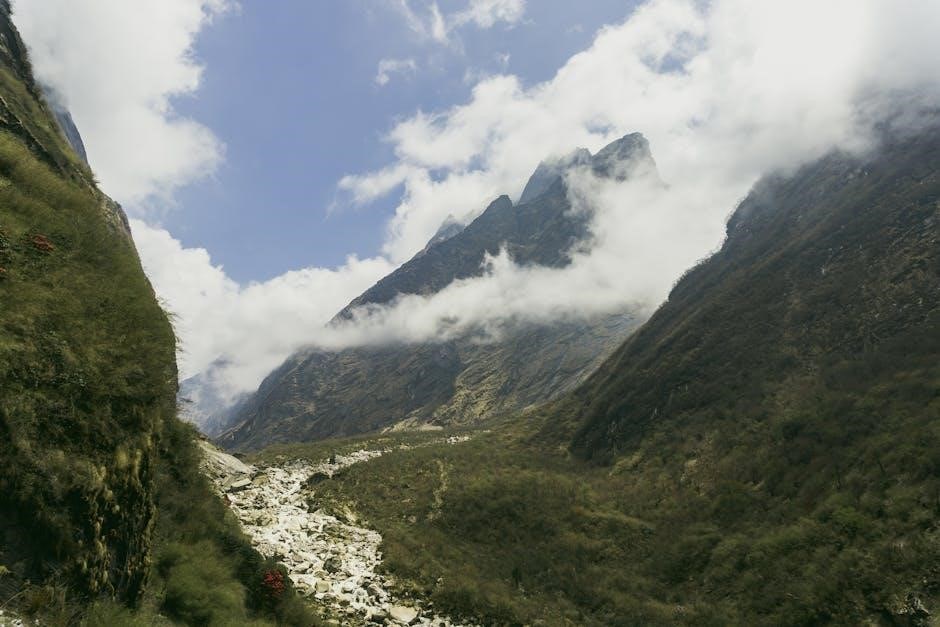
The Indus Valley Civilization showcased remarkable urban planning, evident in cities like Mohenjo-daro and Harappa. These centers boasted grid-patterned streets, dividing the city into organized blocks. Houses, often multi-storied, were constructed with standardized baked bricks, reflecting a degree of uniformity and planning. Public buildings, including granaries and bathhouses, suggest centralized authority and resource management.
Advanced drainage systems, with covered drains and manholes, highlight the civilization’s focus on sanitation and public health. Wells provided access to clean water, essential for urban life. The citadel, a raised area within the city, likely served as an administrative or religious center. The overall urban layout indicates a sophisticated understanding of engineering and urban design, unparalleled in its time.
Water Management Systems: Wells and Drainage
A defining feature of the Indus Valley Civilization was its advanced water management. Wells, found in numerous settlements, provided reliable access to fresh water for drinking and domestic use. These wells demonstrate an understanding of groundwater sources and construction techniques. Even more impressive was the elaborate drainage system.
Covered drains ran alongside streets, collecting wastewater from houses and directing it away from living areas. Manholes provided access for cleaning and maintenance, showcasing a commitment to sanitation. This sophisticated system prevented waterborne diseases and maintained a high level of hygiene. The Great Bath at Mohenjo-daro further exemplifies their mastery of water management, featuring a large bathing pool with intricate drainage and water supply systems. The emphasis on both water supply and waste disposal underscores the civilization’s advanced urban planning and environmental awareness.
Harappan communities thrived due to favorable environmental conditions and agricultural practices. Region-wide conditions, driven by seasonal patterns, supported crop cultivation. Models suggest agricultural success fueled the civilization’s growth and sustenance.
Agricultural Practices and Environmental Conditions
The agricultural practices of the Harappan civilization were significantly influenced by the environmental conditions prevalent in the Indus Valley. The seasonal patterns, particularly the monsoon rains, played a crucial role in determining the types of crops that could be cultivated. Archaeological evidence suggests that the Harappans cultivated a variety of crops, including wheat, barley, peas, sesame, and cotton.
The fertile alluvial soil deposited by the Indus River and its tributaries supported intensive agriculture. The Harappans also developed sophisticated irrigation systems, including canals and wells, to supplement rainfall and ensure a consistent water supply for their crops. These advancements in agricultural technology allowed them to produce surplus food, which supported a large population and contributed to the growth of urban centers. Models of agricultural practices are based on region-wide environmental conditions.

Agriculture and Economy
Trade and Commerce
The Indus Valley Civilization engaged in extensive trade and commerce, both within the civilization and with other regions. The Harappans had a well-developed system of weights and measures, which facilitated trade transactions. They traded agricultural products, such as grains and cotton, as well as manufactured goods, including pottery, jewelry, and textiles.
Evidence of trade with Mesopotamia has been found, indicating that the Harappans exported goods such as carnelian beads, ivory, and timber to the west. In return, they likely imported goods such as metals, precious stones, and textiles. The Indus River served as a major transportation route, allowing for the efficient movement of goods between different settlements. The civilization’s strategic location also facilitated trade with other regions in South Asia. The presence of seals with Indus script in Mesopotamia further supports the existence of active trade relations.
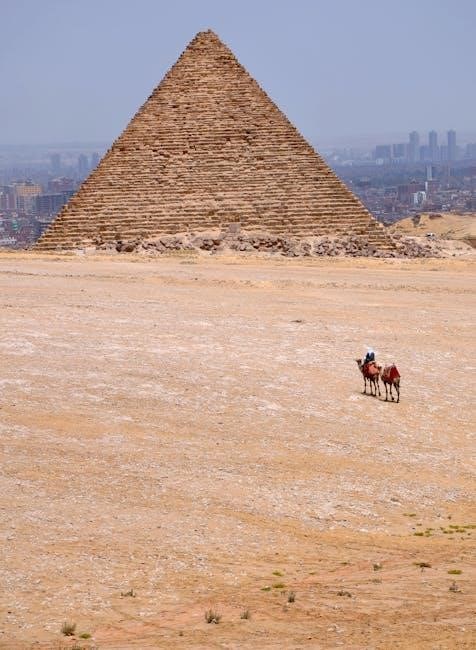
Unresolved Questions and Enigmas
Despite its sophistication, the Indus Valley Civilization’s limited expansion remains an enigma. What factors restricted its growth beyond the Indus Valley region? The reasons are still debated by researchers.
Reasons for Limited Expansion
One of the most puzzling aspects of the Indus Valley Civilization is its apparent lack of territorial expansion, especially considering its advanced urban planning and sophisticated infrastructure. While it controlled a region larger than Mesopotamia or Egypt, it didn’t spread further. Several theories attempt to explain this phenomenon, including environmental constraints, such as dependence on the Indus river system, which limited agricultural potential beyond its immediate basin. Other theories involve social or political factors, such as a decentralized governance model that discouraged large-scale expansion. Trade networks might have provided access to resources without the need for territorial control. The exact reasons for limited expansion remain an area of active research and scholarly debate, highlighting the complexities of understanding ancient civilizations and their choices.
Decline of the Civilization
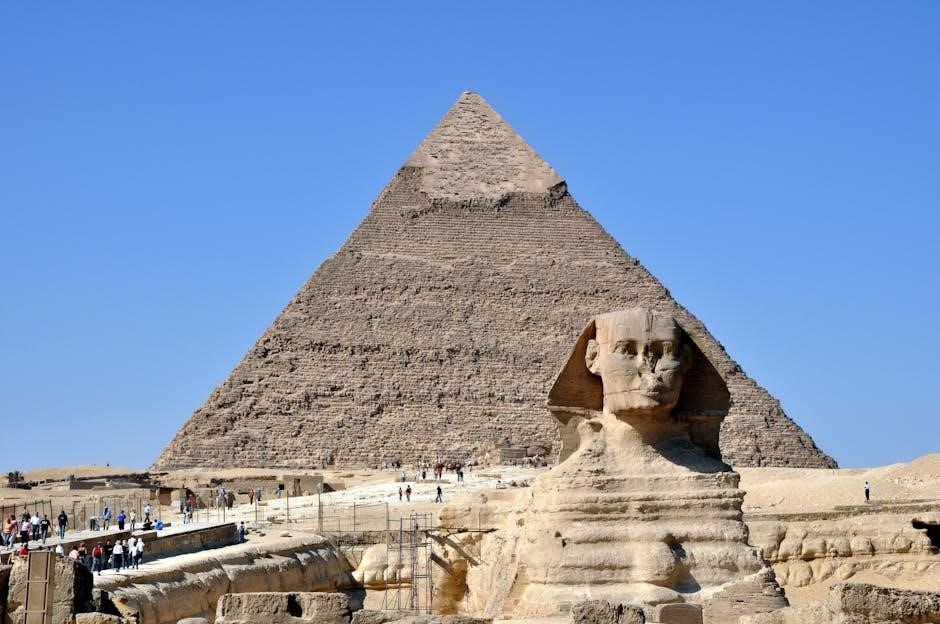
The decline of the Indus Valley Civilization, occurring around 1900 BCE, remains a topic of intense scholarly discussion and research. Several potential factors contributed to its downfall, including environmental changes such as prolonged droughts or shifts in the course of the Indus River and Ghaggar-Hakra River. These changes may have disrupted agricultural practices and led to resource scarcity, forcing populations to migrate; Other theories suggest that social and political instability, coupled with external pressures, like migrations of Indo-European-speaking groups, may have played a significant role. Evidence of warfare or widespread violence is limited. It is likely that a combination of these factors, rather than a single cataclysmic event, led to the gradual decline and eventual abandonment of the major urban centers. The legacy of the civilization, however, continues to influence the region.
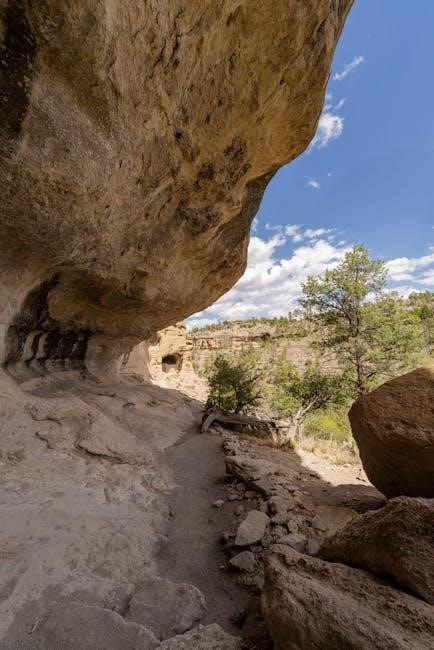
Legacy and Influence
The Indus Valley Civilization, alongside Mesopotamia and Egypt, stands as a foundational civilization. It had unique urban planning, trade networks, and possibly a complex social structure, which distinguishes it from the other contemporary civilizations.
Comparison with Mesopotamian and Egyptian Civilizations
The Indus Valley Civilization (IVC), contemporary to Mesopotamian and Egyptian civilizations, presents a fascinating study in comparative urban development. While Mesopotamia and Egypt are renowned for monumental architecture and centralized power, the IVC exhibits a distinct emphasis on urban planning and sanitation. The widespread grid-patterned cities and sophisticated drainage systems suggest a different societal organization, perhaps more decentralized than its counterparts.
While Mesopotamian societies, as well as the Egyptian, were focused on the rivers, the IVC extended to the larger area, especially to the seashores. Further research is required to understand the cultural exchanges between the IVC and its neighbors, but it is clear that each civilization developed unique responses to their environments and social structures.
Legacy and Influence
Contemporary Relevance
The Indus Valley Civilization (IVC) holds significant contemporary relevance, offering insights into sustainable urban planning and resource management. The IVC’s emphasis on sanitation and water management, evident in its advanced drainage systems and wells, provides valuable lessons for modern urban development, especially in regions facing water scarcity and sanitation challenges. Its focus on trade and resource access in today’s world is a model to follow.
Furthermore, the unresolved mysteries surrounding the IVC’s script and decline encourage ongoing archaeological research and interdisciplinary collaboration. Studying the IVC promotes a deeper understanding of ancient societies and their resilience, inspiring innovative solutions for current societal issues and sustainable future.
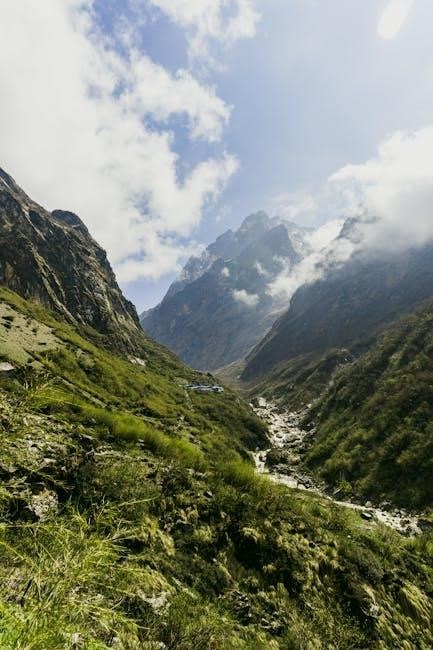
Major Settlements
The Indus Valley Civilization had major settlements including Harappa, Mohenjo-Daro, Dholavira and Ganeriwala. These urban centers showcased advanced planning, infrastructure, and trade networks in the ancient world.
Harappa
Harappa, a major settlement of the Indus Valley Civilization, is situated on the banks of the River Ravi. Excavations revealed a well-planned urban center reflecting Harappan culture. Like Mohenjo-daro, Harappa features citadels and lower towns, suggesting structured social organization. Discoveries at Harappa provide insights into Harappan agricultural practices and trade networks. The site contributes significantly to understanding the civilization’s early stages and its interactions with other regions. Harappa’s archaeological remains highlight the sophistication of urban planning during the Bronze Age. This includes granaries and standardized brick construction, essential for studying early urban life. The ongoing study of Harappa continues to uncover aspects of Harappan society, economy, and technology.
Mohenjo-Daro
Mohenjo-Daro, located in the Sindh province of Pakistan, stands as one of the largest cities of the Indus Valley Civilization. Excavations here revealed advanced urban planning, including a grid-like street layout and sophisticated drainage systems. The Great Bath, a prominent structure, exemplifies the civilization’s engineering and communal bathing practices. Mohenjo-Daro showcases standardized brick construction and public buildings, indicating a well-organized society. Artifacts discovered, such as seals and pottery, provide insight into Harappan culture and trade. Evidence suggests a complex social structure and economic system in Mohenjo-Daro. The city’s decline remains a topic of scholarly debate, with various theories proposed. It has a structured citadel and lower town, typical of Harappan urban centers. The archaeological site offers invaluable data for understanding the Indus Valley Civilization.
Dholavira
Dholavira, situated in Gujarat, India, represents a unique Indus Valley Civilization site known for its distinctive features. The city was divided into three principal divisions, showcasing advanced urban planning and architectural skills. Dholavira’s impressive water management system, including reservoirs and dams, highlights the civilization’s engineering prowess. The discovery of a large inscription, possibly a signboard, provides clues about their writing system. Unlike other Harappan cities, Dholavira features stone construction, utilizing locally available materials. The site’s strategic location facilitated trade and communication with other regions. Excavations have revealed a sophisticated understanding of geometry and town planning. Dholavira offers valuable insights into the Indus Valley Civilization’s diversity and adaptation to varying environments. Its well-preserved remains contribute significantly to our knowledge of Harappan society, economy, and technology. The city’s gradual decline and eventual abandonment remain subjects of ongoing research, offering a detailed view of Harappan life.
Ganeriwala
Ganeriwala, located in the Cholistan Desert of Pakistan, is a significant, yet less explored, site of the Indus Valley Civilization. Situated near the Indian border, it is considered one of the largest Harappan cities, potentially rivaling Mohenjo-Daro and Harappa in size. Its strategic location suggests it was a crucial trade and communication hub within the civilization. Despite its importance, Ganeriwala has faced challenges in terms of extensive excavation and research due to its remote location and environmental conditions. The site offers the potential to reveal new insights into the Indus Valley Civilization’s urban planning, trade networks, and cultural interactions. Preliminary findings suggest a well-organized settlement with a fortified citadel and residential areas. Further investigation of Ganeriwala is crucial to understanding the full extent and complexity of the Harappan Civilization and its regional variations. Its proximity to other major sites highlights the interconnectedness of the Indus Valley Civilization. The site holds valuable clues about the civilization’s decline.
